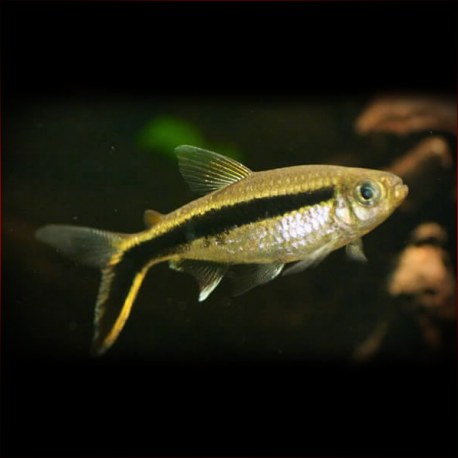More info
Datasheet
| Minimum Tank Size | 70 litres / 18.49 US gallons |
| Maximum Size | 6.0cm / 2.36inches |
| Temperature | 22°C / 71.60°F - 28°C / 82.40°F |
| Hardness | 0-20ºdH |
| pH | 5.5-8.0 |
Behaviour
The False Penguin Tetra is known to be a peaceful species that prefers the company of its own kind in groups of at least 6, ideally 10 or more. When kept in sufficient numbers, their schooling nature is accentuated, and instances of fin-nipping decrease as they concentrate on internal squabbles. To coexist harmoniously in a tank, it is best to house them with smaller, compatible species from South America such as tetras, pencil fish, small cichlids, Corydoras, and Loricariids. This tetra can also thrive in a community tank with smaller rasboras, barbs, Anabantoids, and West African dwarf cichlids.
Feeding and Diet
Although primarily micropredators in nature, False Penguin Tetras readily accept a variety of foods in captivity. They eagerly consume live and frozen fare like bloodworms, Daphnia, and Artemia, along with dried flakes and granules. Providing a mix of small live and frozen foods will contribute to their overall health and vibrancy.
Reproduction & Dimorphism
Breeding False Penguin Tetras is relatively straightforward. Setting up a separate, dimly lit tank with fine-leaved plants or spawning mops for egg deposition is recommended. Alternatively, covering the tank bottom with a mesh to protect the eggs from adult fish is a viable option. These tetras show prolific spawning behavior, with females capable of laying up to 3000 eggs. Newly hatched fry are light-sensitive and should be fed infusoria-type food initially, transitioning to microworms or brine shrimp nauplii as they grow.
Aquarium Setup
For an ideal tank setup, the False Penguin Tetra flourishes in heavily planted environments or well-maintained community tanks. A dark substrate complements their appearance, and the addition of floating plants provides shaded areas preferred by the fish. Alternatively, setting up a jungle biotope-style tank with river sand, driftwood branches, dried leaves, and aquarium-safe peat can simulate natural habitat conditions. Dimmed lighting and low-light plant species like Java fern or Anubias can provide a suitable environment for these tetras.

